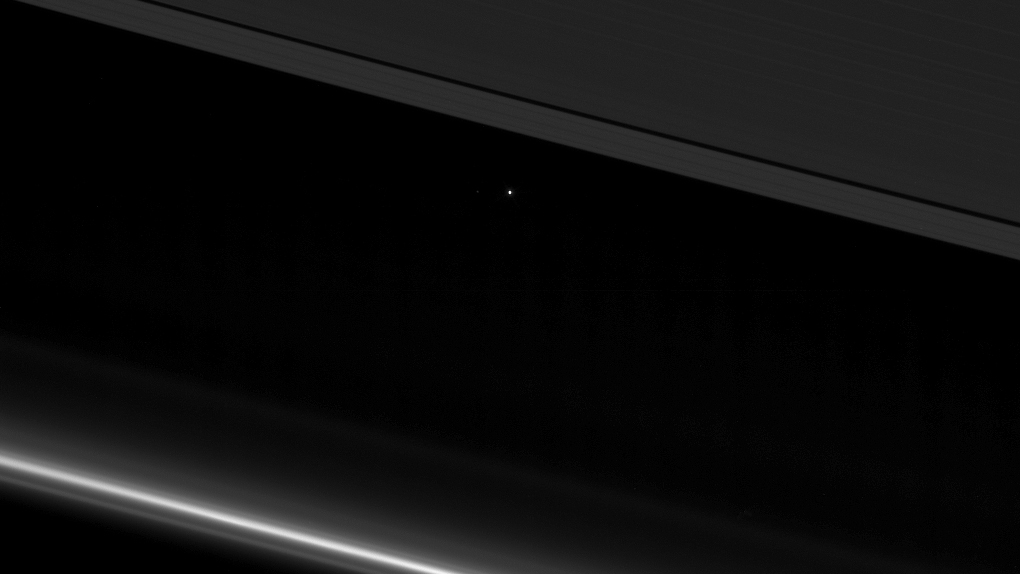News release
From:
Expert Reaction
These comments have been collated by the Science Media Centre to provide a variety of expert perspectives on this issue. Feel free to use these quotes in your stories. Views expressed are the personal opinions of the experts named. They do not represent the views of the SMC or any other organisation unless specifically stated.
Dr Luke Davies is a research associate working on Galaxy Evolution at the International Centre for Radio Astronomy Research based at the University of Western Australia
NASA’s Cassini spacecraft has provided the most amazing images of the Saturnian system, and even the Earth - looking back to see the pale blue dot in the emptiness of space.
However, hidden in these impressive images are incredible scientific discoveries about our ringed neighbour: the intricate weather systems and geological activity in the distant reaches of the solar system, the possibility of life on frozen moons and the details of how planets form in general.
Cassini has taught us about the weird and wonderful hexagon-like structures at Saturns poles, the prebiotic chemistry in the atmosphere of a dynamic Titan with rain, rivers and lakes, and with the Huygens probe, provided the first amazing close-up images of Titan’s surface.
One of its most impressive studies has been into Saturns rings, showing them as dynamic systems which have changed and evolved over Cassini’s 10 year mission - even seeing the possible birth of a new moon.
As Cassini begins its long multi-orbit decent to Saturn, it will study these rings in even greater detail before eventually giving us a fleeting, but invaluable, glimpse of the Saturnian atmosphere.
This is not a long drawn out death for Cassini, but a last hurrah. A final sacrificial research expedition to dramatically increase our understanding of the cosmos.
Glen Nagle is the Outreach and Administration Lead at NASA's Operations Support Officer, Canberra Deep Space Communication Complex, NASA’s Deep Space Network, CSIRO Astronomy and Space Science
Tonight, the CSIRO-managed, NASA Canberra Deep Space Communication Complex (CDSCC) will be focussing its massive antenna dishes on the Cassini spacecraft over 1.3 billion km from Earth just after the expected successful first fly-through of the gap between Saturn’s rings and the gas giant planet’s cloud-tops.
This first deep dive into the 2400 km wide gap between Saturn and its inner most rings signals the start of Cassini’s ‘Grand Finale’ – 22 orbits that will take the spacecraft into this unexplored region over the next 5 months - before the final dive on September 15th, as Cassini plunges directly into the planet’s atmosphere and ends the 20-year odyssey to the ringed world.
Throughout Cassini’s voyage, the CSIRO-CDSCC team have been there to transmit commands to and receive the science data from the spacecraft. CDSCC was the first station to have contact with the spacecraft after it launched in 1997 and throughout its 7 year journey to Saturn. In July 2004, CDSCC again played the vital role ensuring perfect radio communications with Cassini as it entered orbit above Saturn’s rings and later as the spacecraft deployed and landed the Huygen’s probe on the surface of the planet’s largest moon, Titan.
The Canberra tracking station has provided coverage for the last 13 years that the spacecraft has made key discoveries about the planet’s numerous moons, such as the ice-covered Enceladus which has attracted a lot of attention since the discovery of geysers on its surface, which spray water ice into space from a deep ocean. The water has been confirmed to contain gases and organic chemistry important to life.
CDSCC has also performed unique radio science experiments which use the power and sensitivity of the antenna dishes to detect signals which scientists use to probe the lakes on the surface of Titan or scan and probe the rings of Saturn.
Now nearly depleted of fuel, Cassini will take the final plunge in September, ending its life as a shooting star in the atmosphere of this amazing planet. The Canberra Deep Space Communication Complex will be there once again, taking in the final moments and science collected by the Cassini spacecraft, right up until its last breath of data.
The end of mission is planned to ensure strict ‘planetary protection’ laws mandated on deep space missions to prevent any contamination of worlds that have the potential to support life, such as some of the moons of Saturn.
Professor Alan Duffy is Director of the Space Technology and Industry Institute, Swinburne University of Technology
Cassini has revealed in Saturn a world more mysterious and spectacular than we could have ever hoped.
From incredible yet unexpected ‘hexagonal’ storms raging at the North Pole, to the breathtakingly intricate rings sculpted by shepherding moons, Cassini has surprised and surpassed expectations in mission length and scientific discovery.
The Grand Finale will provide unrivalled close-ups of the rings, perhaps finally answering the question as to their age.
Cassini was also the mothership to the Huygens probe which landed on the moon Titan in 2005, revealing a world of rain and rivers not of water but of methane, a boon for sci-fi writers as much as scientists!
Cassini's greatest scientific legacy will be its last, destroying itself to ensure the habitable moons of Saturn remain pristine and uncontaminated by likely Earth-microbial stowaways carried on the craft.
Dr Brad Tucker is an Astrophysicist and Cosmologist at Mt. Stromlo Observatory and the National Centre for the Public Awareness of Science at the Australian National University
Cassini has been a fantastic mission, helping us unlock the secrets of Saturn and its moons over the past decade. From the discoveries on Titan to Enceladus, we will now get to peer straight into the rings. We will get some fantastic insights into how the rings were made, what exactly is in there, and even the atmosphere around there. I’ve always been infatuated with looking at Saturn and I can’t wait to see it in even more detail with these final dives.



 Australia; ACT
Australia; ACT


